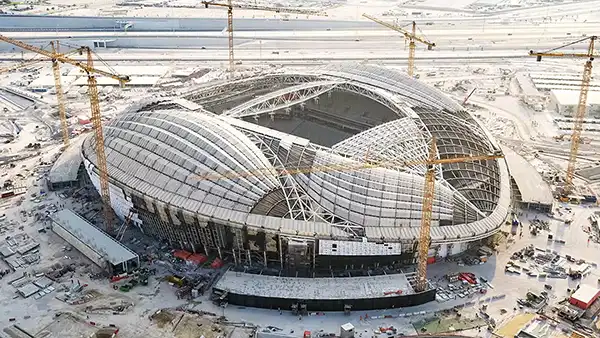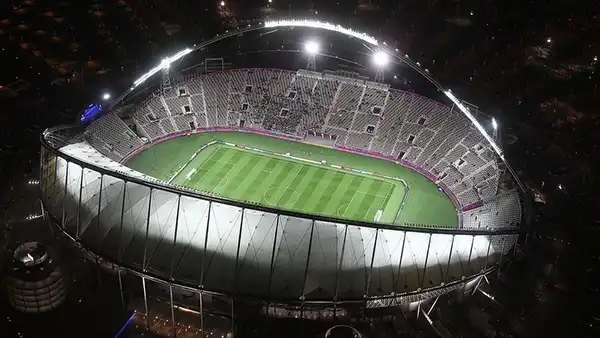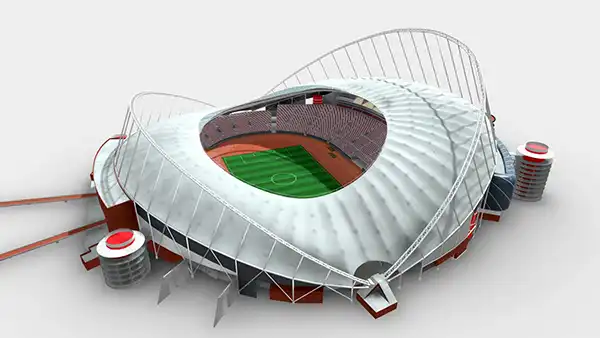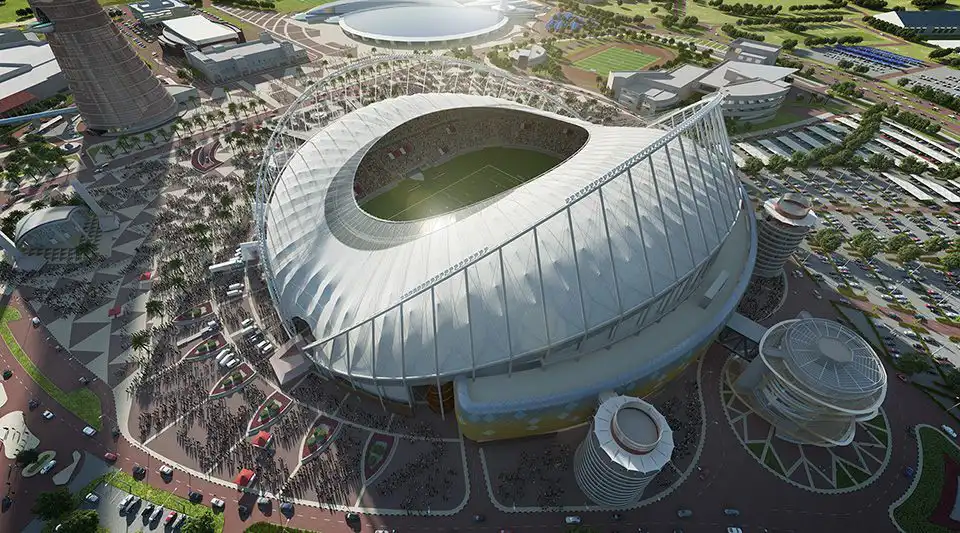For big events like the World Cup which will be held in Qatar, power supply needs to be dependable and efficient to avoid outages or hitches during the matches. To power such an event, power utility hardware company like TTF Power will supply over 180 cast resin transformers which will be situated at the different stadiums in Qatar. The transformers are conformed to customer needs, climatic conditions, sustainable and low energy solutions and safety and compliant design. The transformers will be in consent with the green thinking concept.
With the first ever open air cooling system, the Khalifa International Stadium in Qatar will use up a lot of energy and will require effective power supply. This will help to keep the temperatures at a friendly level and will use less energy consumption compared to other cooling methods.
Electric pole components also known as utility pole components are the devices used on a utility pole to support overhead power lines, electrical cables, street light, fiber optic cables and transformers. The various components used on an electrical pole include guy grip, pigtail bolt, stay rod, street light arm, suspension clamp, secondary clevis and pole band.

FEATURED SERIES
Table of Contents
Trends influencing stadium design

Stadiums are progressively developing, with architects and facilities managers redesigning and defining functionality criterion. The biggest influencers of these changes are technology and commercial generation. They use power units that provide a safe and secure outdoor source of power, water and data. Electricity is needed to power equipment such as LED floodlighting, digital information displays, UV lighting rigs or sprinkler systems.
In the late centuries, stadiums delivered their particular purpose for one particular event. An athletic stadium was for athletics and a football stadium was for football matches. Over the years these has changed and a significant shift in design for sports stadiums and arenas has changed. Stadiums have shifted from single purpose stadiums to multi-purpose stadiums to support a more divergent event. The safety and comfort of the spectators has also shifted drastically with the use of the latest technology.
The use of electric pole component is essential in this case as it helps to maintain current on the lines, protect the overhead devices and to prevent electrocution of the people around the light poles.
Safe power supply

Stadiums are obliged to strict rules and regulations in their design and operation. The safety precautions include the floodlight must be supported by secondary power sources and the different electrical equipment around pitches, running tracks or other sporting areas has to reduce any potential hazards such as trip or electrocution.
The range of removable service units developed is able to provide a safe and secure power source for different equipment around the stadium. The entities can be installed around sports pitches or running tracks and when they are not needed they can be easily lowered back into the ground, merging seamlessly with their surroundings. The most common electric pole components used in light poles include the street light arms, suspension clamp, pigtail bolt and pole bands.
Power considerations for multi-purpose stadium design

This is where stadiums combine events as well as entertainment events. Designing such stadiums can often time put pressure and stress on the practical maintenance of the stadium. Pop up power units help to relieve such pressures as they are able to provide a reliable source of power and water in order to effectively maintain the pitch.
The pop up power units also help to provide an original power solution for stadiums when they host different entertainment events. They also provide a safe power solution for such equipment also having a significant benefit in terms of safety. The risk of electrocution is reduced which ensures that public areas are safe and comfortable to use. The electric pole components also known as utility pole accessories are essential in maintaining current in top of the poles which helps reduce faulty currents.
Multi-purpose stadium facilities should have the ability to provide a fitting area for food services such as food stalls and kiosks to provide revenue for the stadium. These also need stable electricity supply to power the cooking equipment. The pop up power units are perfect as they can be set up when the need arises and then lowered back to the ground when no longer in use.
Smart grid and power line hardware integration
Smart grids refers to the electric grid, a chain of transmission lines, substations, transformers and more that are used to transmit electricity from the power plant to our homes and businesses. A grid is made smart by the sensing along the transmission lines since automated technology allows for a two way communication.
It has controls such as computers, automation, and new technologies and apparatus to work together in ambience to the electrical grid to respond programmatically to our electric demands.
Smart grids incorporate the use of utility pole hardware that includes pole material such as wood, concrete or steel and transmission lines with high voltage to enhance the steady flow of electricity.
Benefits of smart overhead power transmission
Smart grids are used to enhance the reliability, availability and efficiency of electricity that will bring ease of information sharing, development of standards and regulations, technology improvements and improving consumer education. This is an improvement from the utility pole hardware which has various components to use together in transmission. Other benefits include:
- They lead to the augmentation of integration of large-scale renewable energy systems.
- They help improve the security.
- They help to better the integration of customer-owner power generation systems including renewable energy systems.
- They lead to more efficient and effective transmission of electricity.
- They lead to a quicker renewal of energy after power outages.
- They reduce high demands which help reduce power rates.
- They help reduce operations and management costs for utilities.
Technologies of a smart utility pole hardware
Smart grids are all new to electricity networks which responds to rising opportunities and challenges, bringing new benefits to all it users that lead to efficiency and effectiveness.
Utility pole hardware does not have updated technologies which lead to improved efficiency thus making smart grids better for the near future.
These technologies can also be referred to as components of a smart grid. These technologies include:
Advanced control methods that evaluates essential components to enable fast diagnosis and accurate solutions appropriate to any event. The three categories of advanced control methods include:
- Distributed intelligent agents
- Analytical tools
- Operational application
Sensing and measurements technologies that deliver more accurate and faster response information for each important part such as remote evaluation, real time thermal rating, electromagnetic signature analysis and demand side management.
Improved interfaces and decision support, information systems lower the complexity of smart grid which makes both the operator and moderators use it more easily and efficiently.
Integrated communications connects electronic elements in order to get information and control every part in real time. This makes every part of the smart grid to listen and talk.
Advanced components apply the latest study in superconductivity, storage, power electronics and diagnostics. They include components such as high voltage direct current, first and second generation superconductor wire, high temperature super conductor cable and composite conductors.
Pillars of the smart grid
The smart grid is separated into four pillars that manage it. They help to improve the efficiency and effectiveness of the smart grid. They include sensors and control hardware, communications, analytical software and IT-focused utility operations. The utility pole hardware does not require pillars as they are used directly in the transmission lines to enable flow of current from one point to another.
Sensor and control hardware
These are calculations and sensory devices that evaluate various electrical engineering specifications and component states such as current, voltage, phase angle and transformer state.
Communications
The smart grid uses a two-way communication which is cost effective, secure and reliable. Wireless transmitters are being assimilated into more sensory and control devices. This ensures that information gets to where it needs to go.
Analytic software
With the increased geo-spatial data collection, new cross enterprise software applications are being established that can control the processing and spit out functional intelligence to the IT utility operations teams.
IT focused utility operations
With this simple component in place, smart grid applications such as Automated Metering infrastructure (AMI), Demand Response, Distribution Automation and other emerging IT-driven initiatives are free to flourish. Technicians will be able to take on a more forward-learning role. They will be likely to be farsightedly dispatched by intelligent software to be able to respond reactively to circumstances or perform routine maintenance.


